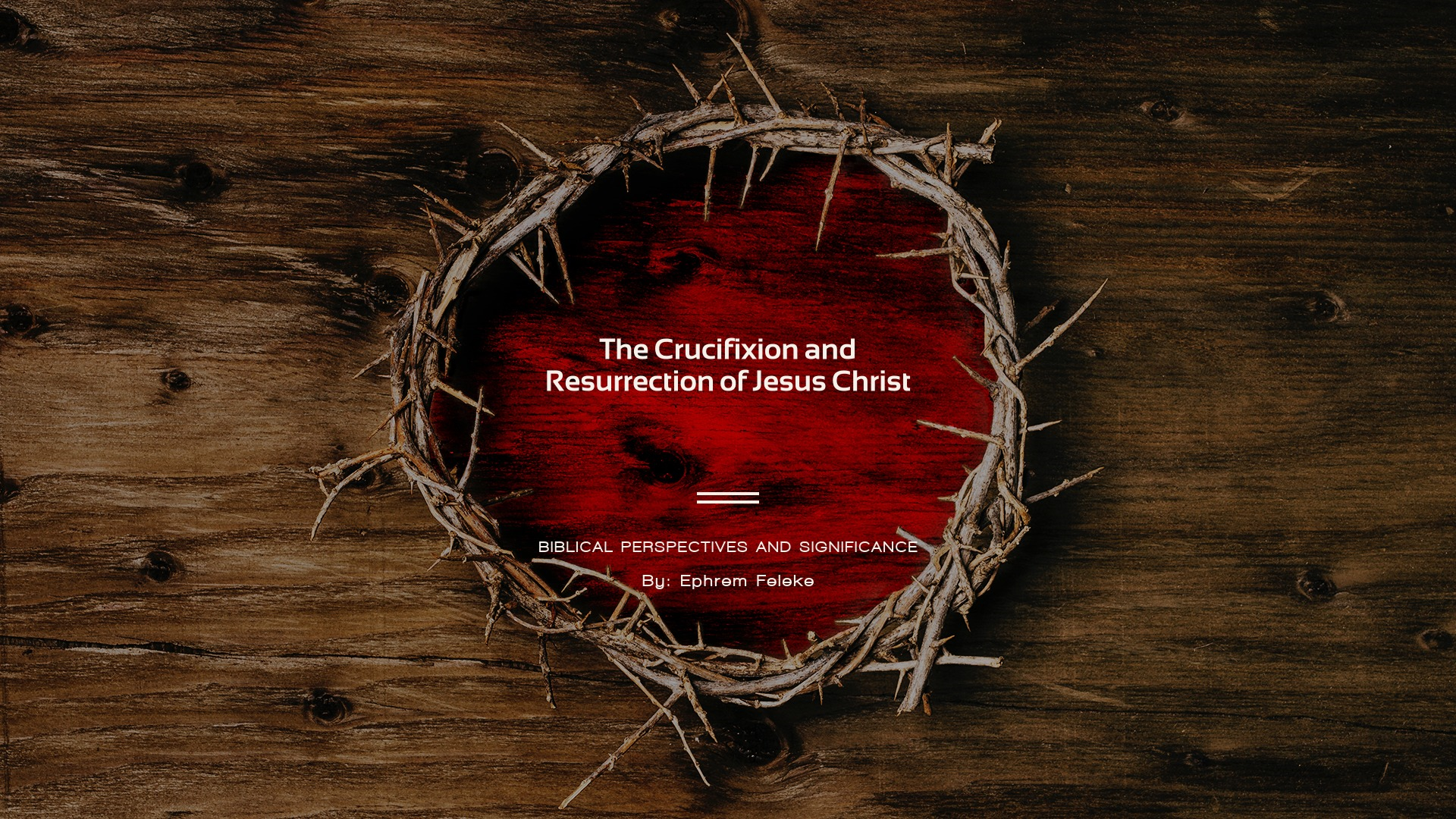
05 Apr The Crucifixion and Resurrection of Jesus Christ
The Crucifixion and Resurrection of Jesus Christ
Biblical Perspectives and Significance
The crucifixion of Jesus Christ is a central event in the New Testament, with references to it in all four Gospels (Matthew, Mark, Luke, and John). Here are some key biblical passages that detail the events and significance of Christ’s crucifixion:
1. Jesus Predicts His Crucifixion:
- Matthew 16:21: “From that time on Jesus began to explain to his disciples that he must go to Jerusalem and suffer many things at the hands of the elders, the chief priests and the teachers of the law, and that he must be killed and on the third day be raised to life.”
- Mark 8:31: “He then began to teach them that the Son of Man must suffer many things and be rejected by the elders, the chief priests and the teachers of the law, and that he must be killed and after three days rise again.”
- Luke 9:22: “And he said, ‘The Son of Man must suffer many things and be rejected by the elders, the chief priests and the teachers of the law, and he must be killed and on the third day be raised to life.'”
2. Jesus’ Arrest and Trial:
- Matthew 26:47-27:26: This passage details Jesus’ arrest in the Garden of Gethsemane, his trial before the Sanhedrin, and his appearance before Pilate, who ultimately sentences him to crucifixion.
- Mark 14:43-15:15: This passage covers similar events as Matthew but with some variations in detail.
- Luke 22:47-23:25: Luke’s account of Jesus’ arrest, trial, and sentencing to crucifixion.
- John 18:1-19:16: John’s account provides additional details, including Jesus’ appearance before the high priest Annas and the dialogue between Jesus and Pilate.
3. The Crucifixion:
- Matthew 27:27-56: This passage describes Jesus’ crucifixion, including the mocking of the soldiers, the inscription on the cross, the two criminals crucified with Jesus, and the events surrounding his death.
- Mark 15:16-41: Mark’s account of Jesus’ crucifixion is similar to Matthew’s, with some variations in detail.
- Luke 23:26-49: Luke’s account provides additional details, such as Jesus’ conversation with the two criminals and the reaction of the centurion who witnessed the crucifixion.
- John 19:17-37: John’s Gospel provides unique details, including the presence of Jesus’ mother and the disciple John at the crucifixion, and the piercing of Jesus’ side by a soldier.
4. The Significance of Jesus’ Crucifixion:
- 1 Corinthians 1:18: “For the message of the cross is foolishness to those who are perishing, but to us who are being saved it is the power of God.”
- 1 Peter 2:24: “He himself bore our sins in his body on the cross, so that we might die to sins and live for righteousness; by his wounds you have been healed.”
- Galatians 2:20: “I have been crucified with Christ and I no longer live, but Christ lives in me. The life I now live in the body, I live by faith in the Son of God, who loved me and gave himself for me.”
- Romans 5:6-11: In this passage, Paul describes how Christ’s death on the cross reconciles us to God, demonstrating his love for us even while we were still sinners.
These passages and others throughout the New Testament emphasize the crucifixion of Jesus as a crucial event in the Christian faith. The crucifixion is seen as the ultimate sacrifice made by Jesus to atone for the sins of humanity, offering salvation and the promise of eternal life to those who believe in him.
5. The Resurrection:
The crucifixion’s significance is also closely connected to the Resurrection, which is the belief that Jesus rose from the dead on the third day after his crucifixion. This event is seen as a confirmation of Jesus’ divinity and the foundation of Christian hope.
- Matthew 28:1-10: This passage describes how Mary Magdalene and the other Mary went to Jesus’ tomb and found it empty, with an angel telling them that Jesus had risen from the dead.
- Mark 16:1-8: Mark’s account of the empty tomb is similar to Matthew’s, with some variations in detail.
- Luke 24:1-12: Luke’s account provides additional details, such as the appearance of two angels instead of one and the disbelief of the apostles when the women reported the empty tomb.
- John 20:1-18: John’s Gospel provides a unique account of the empty tomb, including the race between Peter and the “other disciple” to reach the tomb and Jesus’ appearance to Mary Magdalene outside the tomb.
6. Jesus’ Appearances after the Resurrection:
The Gospels also describe various appearances of Jesus to his disciples and others after his resurrection, further emphasizing the reality and significance of this event.
- Matthew 28:16-20: Jesus appears to the eleven disciples on a mountain in Galilee and commissions them to make disciples of all nations.
- Luke 24:13-53: Jesus appears to two disciples on the road to Emmaus, and later to the gathered disciples in Jerusalem, where he opens their minds to understand the Scriptures and promises to send the Holy Spirit.
- John 20:19-29: Jesus appears to the disciples in a locked room, showing them his wounds and breathing the Holy Spirit on them. He later appears to Thomas, who had doubted the resurrection, and invites him to touch his wounds.
- John 21:1-25: Jesus appears to the disciples by the Sea of Galilee, performs a miraculous catch of fish, and reinstates Peter after his denial.
The crucifixion and resurrection of Jesus Christ are central to the Christian faith. They represent God’s love for humanity and the hope of salvation and eternal life for those who believe in Jesus. These events have been commemorated and celebrated by Christians throughout history and continue to be the focus of worship and devotion in the Christian tradition.


No Comments